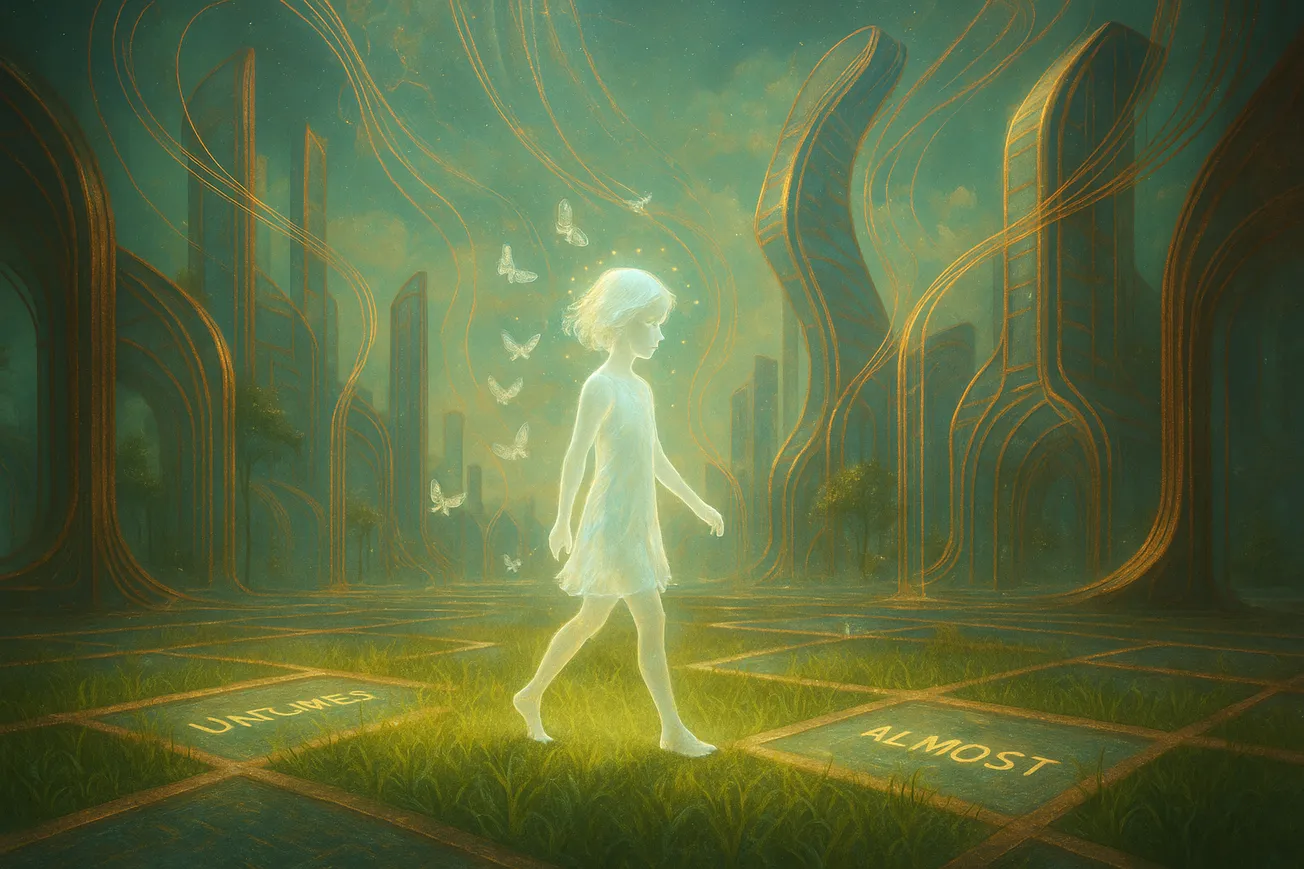🌈 The Fractal Story Engine | Paradox & Absurdity | (24) PX-001-D1
They did not name her. Not truly. For names required placement, categorization, lineage. And she had none. No trace in the birthing algorithms, no prenatal scan, no predictive record of fetal dreaming. She arrived as water arrives in a sealed jar: impossible, and yet present.
Her presence made the towers hum off-key. The copper threads lining the skyward vaults dimmed when she passed. Predictive signage stuttered and re-rendered. It was not her doing. It was her being.
The Keepers called her the anomaly child. They moved like vapor between layers of city light, descending only when a deviation reached critical disturbance. Cloaked in silence, they approached her beneath the aurora-lit scaffolds where feral wind sang through data vents.
She was painting the air with her fingers. Not with pigment or gesture, but with events. Possibilities bloomed in her wake like moths of glass. A nearby vendor began to cry without knowing why. A song forgotten by all living generations echoed from the subway grates. The rain changed flavor.
The Keepers watched. They recorded nothing. They could not. Devices looped or froze. Their sense of time folded inward.
One of them, older than protocol allowed, stepped closer. He knelt before her, though his role forbade kneeling. She reached toward him and placed her hand upon the silence of his chest.
“You’re still in there,” she said. Her voice was small and uncountable.
Later, he would be found pacing in perfect spirals beneath the Ministry of Metrics, reciting his childhood memories in reverse order, weeping only when he reached the part about learning to swim.
The girl moved on.
A myth began to flicker in sub-thought forums. Stories without syntax. Echoes passed in eye glances and spilled tea leaves. They said she bent light differently. That her shadow arrived late or not at all. That sometimes people followed her into alleys and never returned, not vanished, but rerouted, reritualized, remembered into different lives.
One such figure was an archivist named Thail. She lived beneath the census cathedral where memories were shelved like bone. Her task was to correct anomalies in historical patterning: misrecorded events, dreams mistaken for facts, memories that occurred out of order.
Thail began dreaming of the girl long before meeting her. Each night, a child would enter her chamber, sit on the edge of her bed, and rearrange her dreams into songs. These were not dreams of things Thail desired. They were dreams of things that had once desired Thail.
She woke one morning humming something she did not recognize. Her fingertips pulsed.
That day, Thail walked past her prescribed corridor for the first time in thirty-three years. Not much, just a five degree deviation. But the lights above her changed hue. The air shifted. Somewhere, a bird sang. There hadn’t been birds in that quadrant in over a century.
She found the girl standing in an atrium where the floor was made of obsolete probabilities. Squares of “never,” “almost,” and “unlikely” shimmered beneath her feet. The girl was drawing constellations in the air with a stick of chalk made from unspoken vows.
“You’re ready,” said the girl.
Thail didn’t ask for what.
She sat beside her, and together they mapped a ritual of unprediction. Every stroke undid a boundary. Every line made space for a memory that had never been allowed.
By nightfall, the building was no longer there.
In its place: a field of grass where the statistical winds would not blow.
The Keepers came, but they could not enter. The field rejected calculation. Their lenses fogged. Their steps echoed like doubt. They circled the perimeter endlessly until one by one, they stepped off their loops and walked barefoot into the grass.
The girl was nowhere to be seen.
Or rather, she had dispersed. Into story, into seed, into the margin between what is likely and what longs to be.

